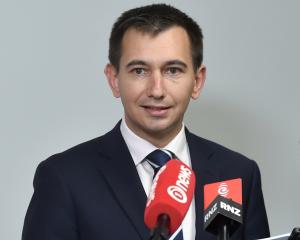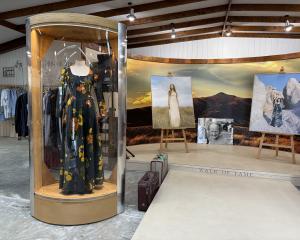
"Tourism turbocharge takes New Zealand to the world" topped her release on a $13.5 million Tourism New Zealand international marketing campaign which it is hoped will result in an extra 23,000 international visitors by the end of March next year, bringing in $100m.
This campaign will be aimed at China, Australia, the United States, India, Germany and South Korea and paid for by international visitor levies.
Upston said the government knew how international marketing worked, with about 14% of international holiday visitors already being directly influenced by Tourism NZ’s marketing strategy.
Overseas visitor arrivals at 354,4000 were down by 8400 in February compared with the same time last year. (In 2024 there was a later start to the Chinese New Year, when many Chinese go on holiday, and the month also had an extra day because it was a leap year.)
But while the numbers from China and some other Asian countries were down, there were substantial increases this year in visitors from the US, Australia and Britain.
Indeed, the 63,700 visitors from US in February was a record for any month.
We do not know whether that could be put down to people wanting to get as far away as possible from the mayhem of President Donald Trump’s policies.
In the year ahead it may not be so easy to attract as many US visitors as market volatility affects their savings.
Nobody would deny marketing is necessary in tourism, but questions remain about whether the government has its priorities right yet in its push for more overseas visitors.
Westland District Mayor Helen Lash said her area, which was back to pre-Covid levels of tourism, could not take more visitors without proper investment in infrastructure. Getting enough staff was also difficult.
She would rather see money spent on infrastructure than a push for more visitors at this time.
Lash drew attention to the need for spending on Franz Joseph’s wastewater disposal and questioned whether it was reasonable for 500 ratepayers to support 3500 tourism bed nights.
The area would appreciate more growth, but she made the point that without infrastructure investment there was a risk tourists would be faced with places in disrepair.

The government seems to have scotched the idea of a bed tax, something Queenstown had almost got over the line before the Covid-19 pandemic.
Upston has said she accepts there are funding challenges, but these varied throughout the country and 30 different versions of a bed tax would not be feasible.
There has been much emphasis on the desire to return to pre Covid-19 levels of tourist activity, but the grumpiness of some communities at that time about the impact of tourist numbers should not be forgotten. Surly locals do not make for a memorable tourist experience.
Is enough being done yet to entice visitors to spend more time outside of the tourism hotspots where facilities are under too much pressure?
Chief executive of Ireland’s national tourism development authority Paul Kelly, who spoke at the Otago Tourism Policy School in Queenstown recently, made the point growth has to be managed in the context of whether it works for the community, the industry and the environment.
Just being interested in the industry and the economic return out of tourism and maximising that, was not a sustainable strategy for the long term.
If you damaged your reputation, it took a long time to recover, and that damage could include whether you were seen as value-for-money.
The government has some way to go to show it has a cohesive approach to tourism which fills our cafes and our hotels and has people visiting our natural attractions without concerning effects on the environment, putting too much pressure on creaking infrastructure, or upsetting the locals.












